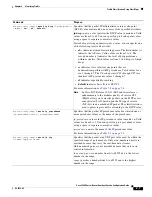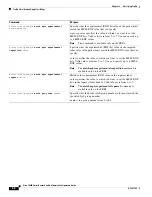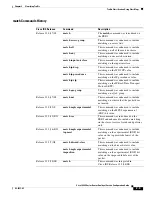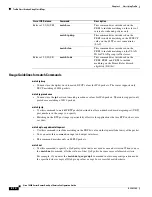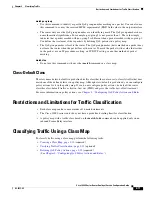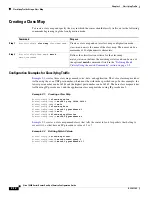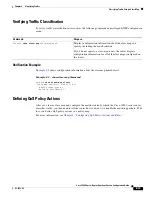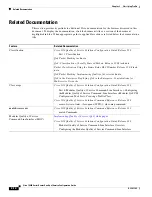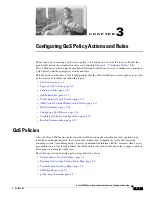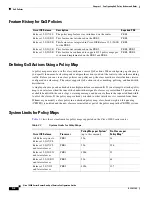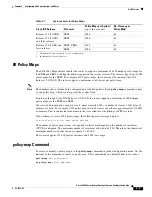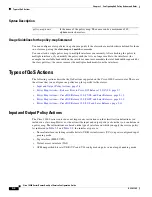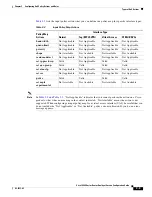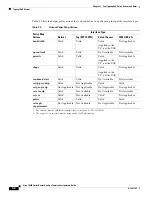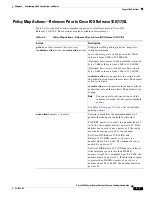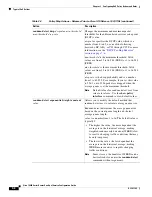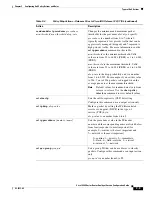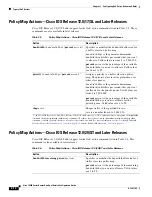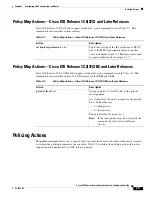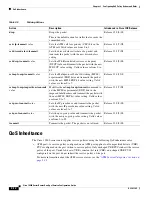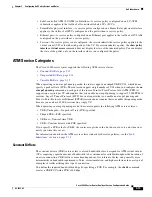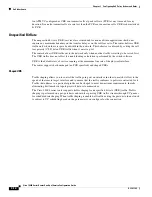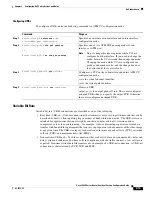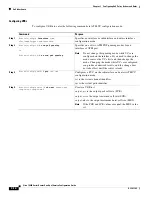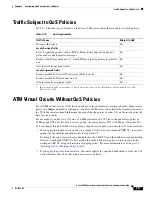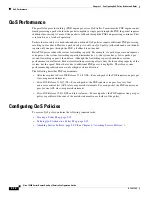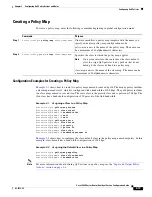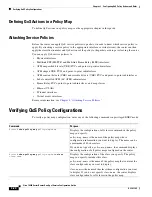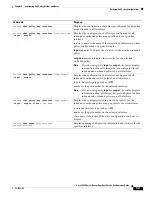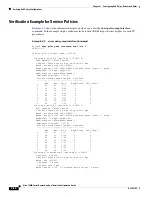
3-7
Cisco 10000 Series Router Quality of Service Configuration Guide
OL-7433-09
Chapter 3 Configuring QoS Policy Actions and Rules
Types of QoS Actions
Policy Map Actions—Releases Prior to Cisco IOS Release 12.0(17)SL
Table 3-4
lists the QoS action commands supported in all releases prior to Cisco IOS
Release 12.0(17)SL. These actions are also available in later releases.
Table 3-4
Policy Map Actions—Releases Prior to Cisco IOS Release 12.0(17)SL
Action
Description
police
bps
[
burst-normal
|
burst-excess
]
[
conform-action
action
|
exceed-action
action
]
Configures traffic policing in policy-map class
configuration mode.
bps
is the average rate in bits per second. Valid
values are from 8,000 to 200,000,000.
(Optional)
burst-normal
is the normal burst size in
bytes. Valid values are from 1,000 to 51,200,000.
(Optional)
burst-excess
is the excess burst size in
bytes. Valid values are from 1,000 to 51,200,000.
conform-action
action
specifies the action to take
on packets that conform to the rate limit. The default
action
is transmit.
exceed-action
action
specifies the action to take on
packets that exceed the rate limit. The default
action
is drop.
Note
You can specify only one action each for
conform or exceed. Do not specify multiple
actions.
See
Table 3-9 on page 3-12
for a list of available
policing actions.
queue-limit
number-of-packets
Specifies or modifies the maximum number of
packets that the queue can hold for this class.
For PRE1,
number-of-packets
is a number from 32
to 16,384; the number must be a power of 2. If the
number you specify is not a power of 2, the router
uses the nearest power of 2 to your number.
For Cisco IOS Release 12.2(15)BX and
Release 12.2(16)BX,
number-of-packets
is a
number from 32 to 16,384. The number does not
need to be a power of 2.
For Cisco IOS Release 12.3(7)XI and later releases,
if the interface speed is less than 500 MB,
number-of-packets
is a number from 8 to 4096; the
number must be a power of 2. If the interface speed
is greater than 500 MB,
number-of-packets
is a
number from 128 to 64,000; the number must be a
power of 2.

